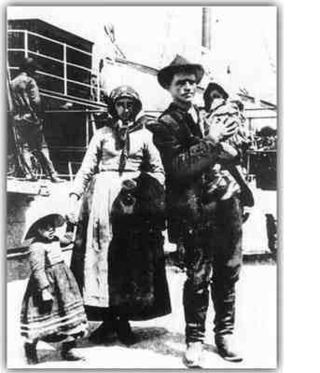Regional differences in the way Spanish is spoken can usually be attributed to either the influence of native languages that exist in a particular area or the languages brought by immigrants that blend with Spanish to create a unique regional dialect. The Spanish spoken in Buenos Aires, as we have discussed in our series on Lunfardo words, is no exception.
Another example of a language influence is Cocoliche, which takes its name from Antonio Cuculicchio, a theater worker in the Podestá theater company established in Argentina and Uruguay towards the end of the nineteenth century. An Italian immigrant, Cuculicchio’s accent was apparently often mocked by others, giving rise to the comical caricature of a figure called “Cocolicchio”, representing a southern Italian.
Cocoliche is a hybrid language that arose from the meeting of Spanish in Argentina and Italian brought to that country by immigrants around the turn of the twentieth century. The result was a pidgin — an oral form of communication that blended elements of two languages to foster communication between diverse groups of people, in some cases simplifying the grammar and lexicon of each language.
Over time, as the Italian immigrants in Argentina spread out geographically and blended more into their new culture, Cocoliche began to disappear. Yet as it became more and more rare to hear the language spoken, per se, its remnants were left — and still remain — in the form of surviving words and turns of accent. Indeed, Cocoliche is the origin of some characteristics commonly associated with the Argentinian accent of Italian immigrants, such as the “ch” sound in “diche” (dice).
Some cocoliche words:
- laburar:to work
- gamba: leg, click here to learn more.
- gambetear: to avoid, click here to learn more.
- minga: nothing
- yeta: bad luck, click here to learn more.
- yiro: prostitute, click here to learn more.
- yirar: to go for a walk, click here to learn more.
- salute: cheers
- manyar: to eat
- birra: beer
- fiaca: laziness, click here to learn more.




